If you are looking for a versatile, shade-tolerant and extremely reliable native plant for a shady site in your yard, I highly recommend downy arrowwood (
Viburnum rafinesquianum). This native shrub tolerates a wide spectrum of soils, except for heavy clay, and provides color in spring, with its creamy-white, flat-topped flowers, and fall, with its brilliant foliage that is usually bright red or maroon.
Downy arrowwood is similar in appearance and form to southern arrowwood (
V. dentatum). Downy arrowwood, however, is quite shade-tolerant and occurs naturally in semi-open woodland understories and along partially shaded woodland edges.
Not in the eastern U.S.? Browse plants native to other regions of the U.S.
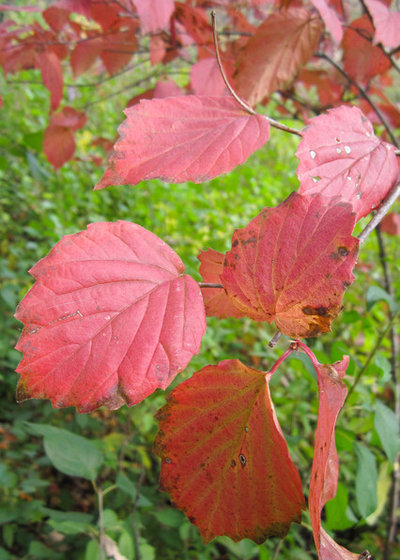
Holm Design & Consulting LLC
Botanical name: Viburnum rafinesquianum (syn.
Viburnum rafinesqueanum)
Common names: Downy arrowwood, downy arrowwood viburnum, downy arrow-wood
Origin: Native to eastern North America, from the eastern edge of the Dakotas east to New Hampshire in the north and North Carolina in the south. It is absent in South Carolina and rare in Georgia, Alabama and Tennessee; in Canada it is native from Saskatchewan eastward to Quebec.
Where it will grow: Hardy to minus 45 degrees Fahrenheit, or minus 43 degrees Celsius (USDA zones 2a to 7b; find your zone)
Shown: Bright red fall foliage color
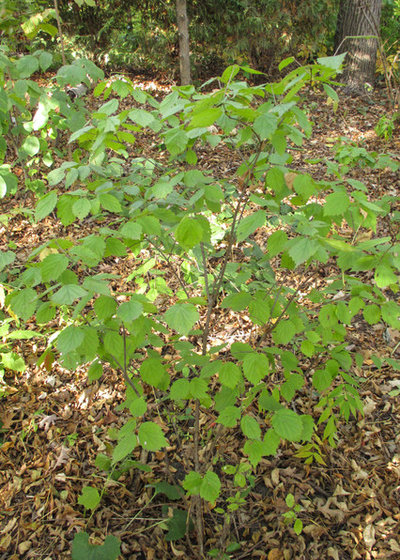
Holm Design & Consulting LLC
Typical plant communities: Dry-medium to medium semi-open woodland understories and woodland edges
Soil requirement: Dry-medium to medium, sandy-loam to loamy-clay soil
Light requirement: Shade to partial sun
Mature size: 4 to 9 feet tall and 3 to 5 feet wide
Shown: A single shrub about three years after it was planted from a 2-gallon container
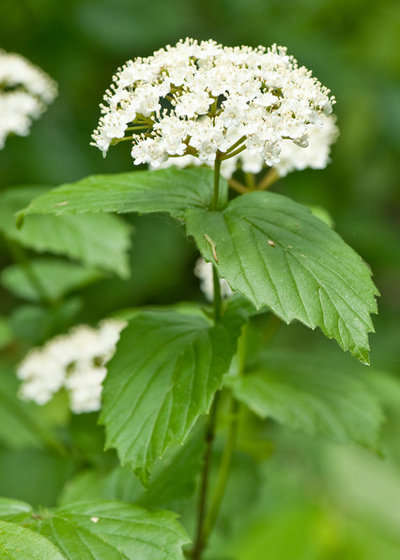
Holm Design & Consulting LLC
Benefits and tolerances: Tolerates shade and a wide range of soil conditions
Seasonal interest: Coarsely serrated leaves turn from green to bright red or maroon in fall; creamy-white flowers open in mid-May through June; bushy habit and upright, sturdy form
When to plant: Spring or fall. Potted plants are available from most native-plant nurseries in regions where this shrub occurs.
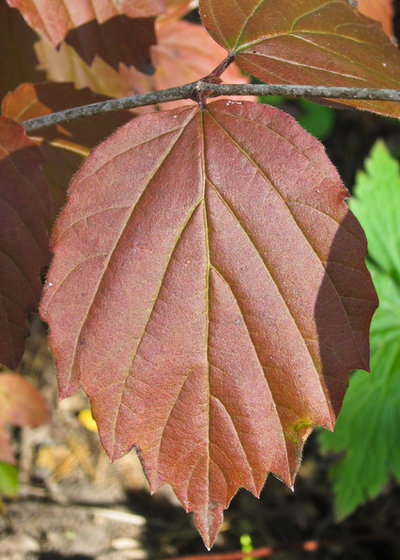
Holm Design & Consulting LLC
Distinguishing traits. Downy arrowwood has a compact form, an interesting leaf texture and showy creamy-white flowers that open in spring. The bluish-purple fruit attracts many types of birds, which devour the ripening berries.
How to use it. Use this native shrub in any shady site, including a formal shade garden, massed along a woodland edge or naturalized in a deciduous woodland. Combine downy arrowwood with shade-tolerant native perennials, including early meadow-rue (
Thalictrum dioicum), bigleaf aster (
Eurybia macrophylla), zigzag goldenrod (
Solidago flexicaulis) and largeflower bellwort (
Uvularia grandiflora).
Shown: Close-up of the leaf shape and texture
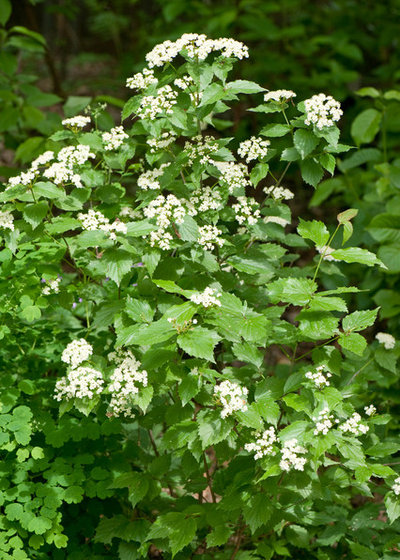
Holm Design & Consulting LLC
Planting notes. Downy arrowwood is rhizomatous and will slowly sucker over time, forming small colonies. For this reason, plant it in clusters to form a thicket that will provide nesting sites for shrub-nesting birds.
Shown: A 4-foot shrub in full bloom in early June
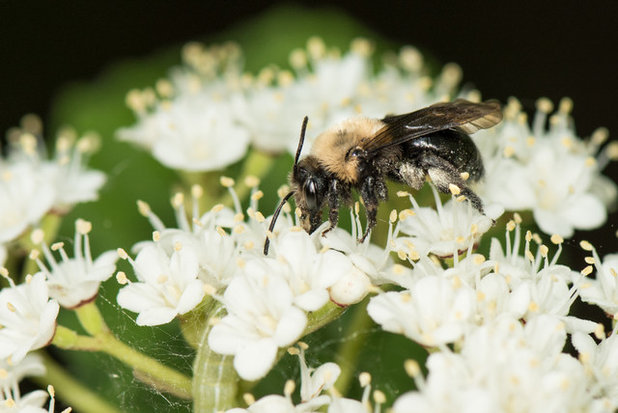
Holm Design & Consulting LLC
Pollinator notes. Downy arrowwood flowers produce a lot of pollen, and visiting insects, including bees, flies and beetles, get covered in pollen while searching for nectar on the flowers. Look for several types of long-horned beetles, syrphid flies and mining bees (
Andrena spp.) visiting the flowers.
Shown: A female mining bee (
Andrena sp.)





